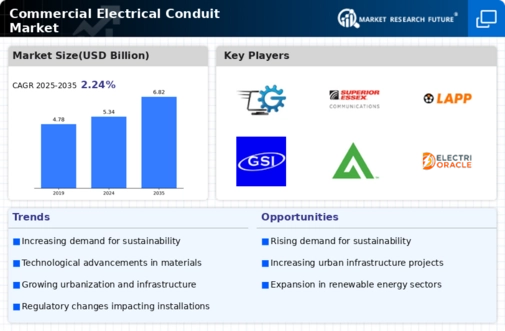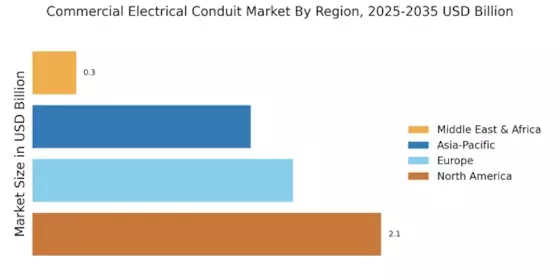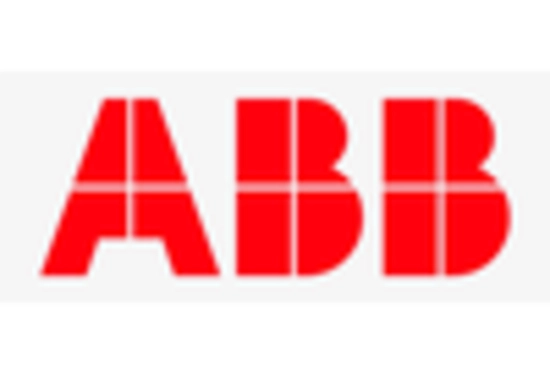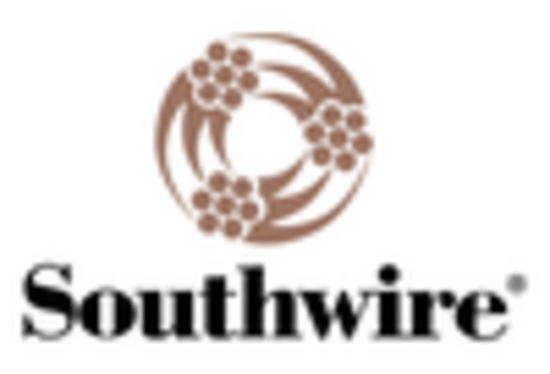Urbanization Trends
Urbanization trends are playing a crucial role in shaping the Commercial Electrical Conduit Market. As populations migrate towards urban areas, the demand for residential and commercial buildings is increasing. This surge in construction activities necessitates the use of electrical conduits to ensure safe and efficient electrical installations. Data indicates that urban areas are expected to house nearly 68% of the world's population by 2050, leading to a significant rise in infrastructure development. Consequently, the demand for commercial electrical conduits is likely to increase as builders and contractors seek reliable solutions for their electrical needs in densely populated areas.
Infrastructure Development
The ongoing expansion of infrastructure projects across various sectors is a primary driver for the Commercial Electrical Conduit Market. Governments and private entities are investing heavily in the construction of roads, bridges, and buildings, which necessitates the use of electrical conduits for safe and efficient wiring. According to recent data, the construction sector is projected to grow at a compound annual growth rate of approximately 5.5% over the next few years. This growth is likely to increase the demand for electrical conduits, as they are essential for protecting electrical wiring in these infrastructures. As urbanization continues to rise, the need for reliable electrical systems in new developments further propels the market for commercial electrical conduits.
Technological Advancements
Technological advancements in materials and manufacturing processes are reshaping the Commercial Electrical Conduit Market. Innovations such as the development of lightweight, durable, and corrosion-resistant materials are enhancing the performance and longevity of electrical conduits. Additionally, the integration of smart technologies into electrical systems is creating new opportunities for conduit applications. For example, conduits that can accommodate smart wiring solutions are becoming increasingly popular in commercial buildings. The market is witnessing a shift towards conduits that not only serve traditional purposes but also support modern technological needs. This evolution is likely to attract new investments and drive market growth.
Energy Efficiency Standards
The increasing emphasis on energy efficiency is significantly influencing the Commercial Electrical Conduit Market. Governments and regulatory bodies are implementing stringent energy efficiency standards that require the use of advanced electrical systems. This trend is pushing manufacturers to innovate and produce conduits that not only meet these standards but also enhance the overall energy performance of electrical installations. For instance, the adoption of energy-efficient conduits can lead to reduced energy losses, which is becoming a critical factor in project planning. As energy costs continue to rise, the demand for conduits that support energy-efficient designs is expected to grow, thereby driving the market forward.
Increased Demand for Renewable Energy
The rising demand for renewable energy sources is a significant driver for the Commercial Electrical Conduit Market. As countries strive to meet their renewable energy targets, the installation of solar panels, wind turbines, and other renewable energy systems is on the rise. These installations require robust electrical conduits to ensure safe and efficient energy transmission. The renewable energy sector is expected to grow substantially, with investments projected to reach trillions of dollars in the coming years. This growth will likely create a surge in demand for conduits that can withstand various environmental conditions while providing reliable electrical connections.


















Leave a Comment